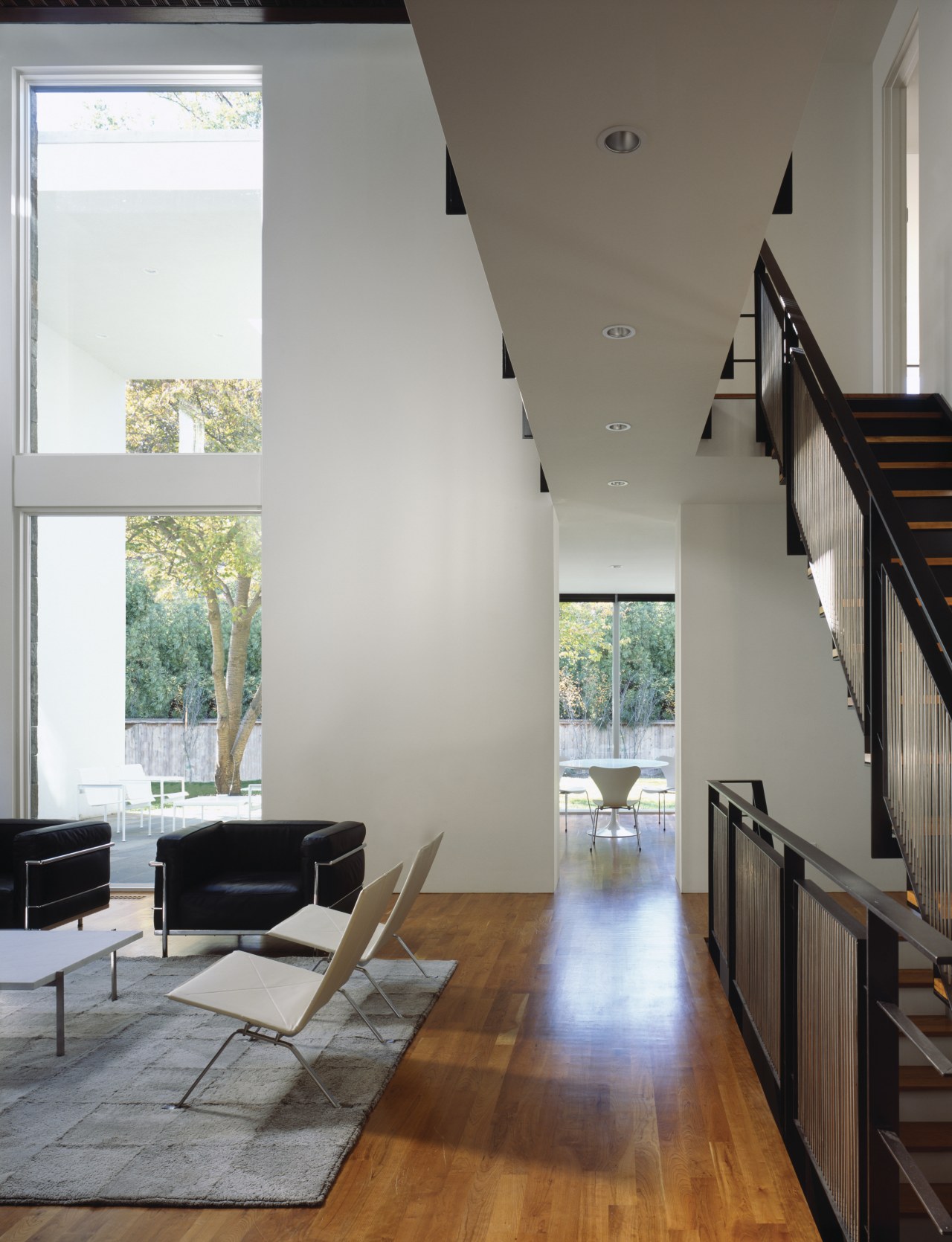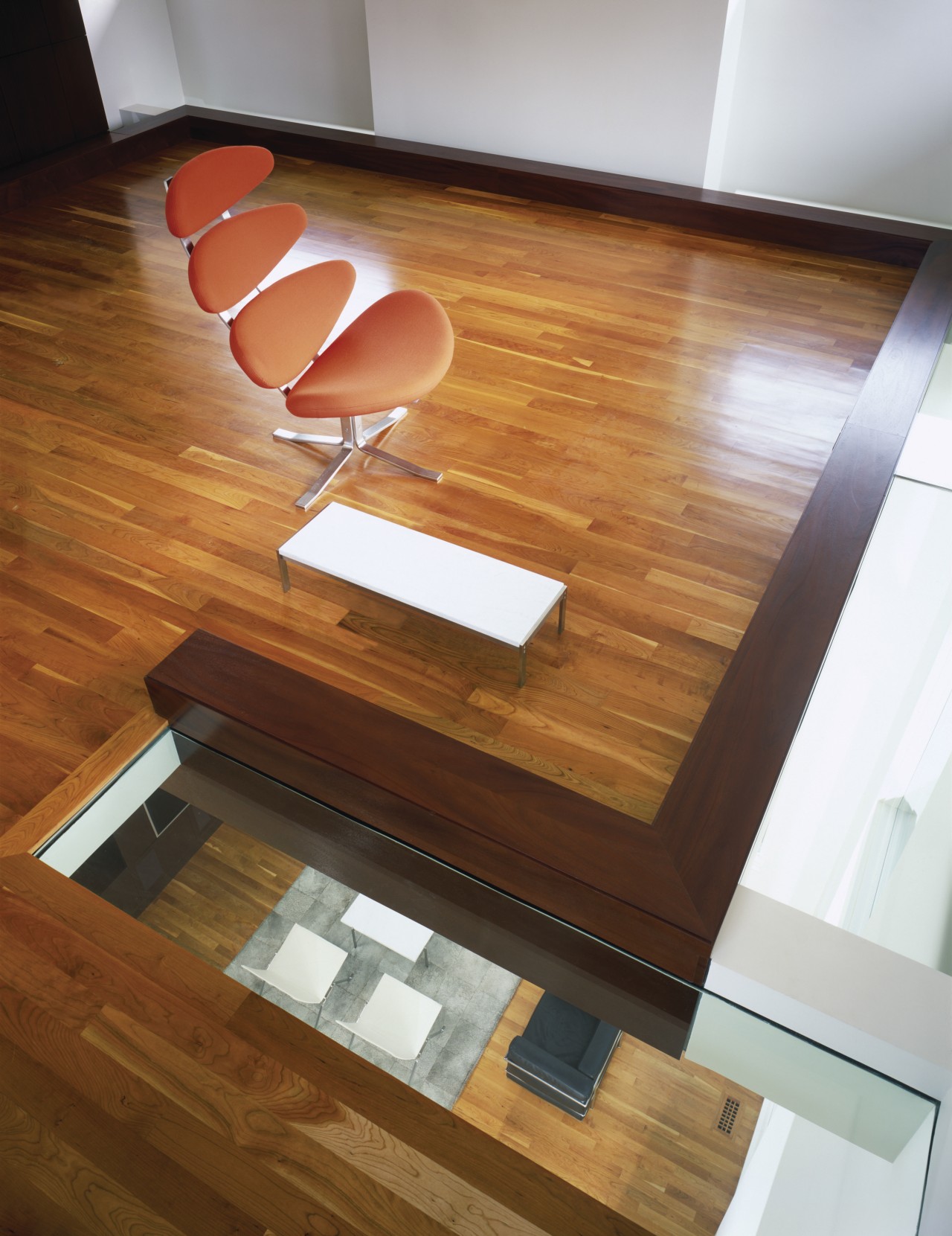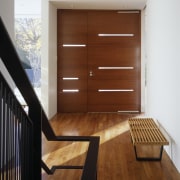Reinventing the past
From a late '30s brick colonial to a highly modern composition although completely rebuilt, this house remains in tune with the architectural fabric of the neighborhood

On a street of '30s and '40s stucco houses, modern architecture will always stand out, but it doesn't have to look out of place.
For this project, architect David Jameson chose to respect the architectural fabric of the neighborhood by ensuring the rebuilt house retained its original proportions and footprint.
"This is a traditional suburban Washington neighborhood where the houses have a methodical cadence as they march down the street," he says. "We wanted to respect the scale of these properties, even though we changed the design vocabulary from traditional to modernist."
As well as ensuring the main volume matched the proportions of the neighboring two-story houses, Jameson used similar materials and matched the line of the eaves for consistency.
"Essentially, we took the existing mass of the original house and reinvented it to create a modern composition. Linear stucco walls appear to wrap and protect a stone pavilion inserted within. In contrast, the top story is a glass clerestory."
An etched glass wall and hedge at the front of the property provide privacy from the street, allowing a fully glazed front facade.

A massive, vault-like entry interrupts the symmetry of the facade and opens to the gallery and central circulation spine. Clad in Spanish cedar, the door features bands of aluminum and Lucite a translucent material that creates ribbons of light on the interior.
Jameson says the owners wanted a very open, informal house and a design that would acknowledge the family's musical roots. Wide openings allow an easy flow between living areas and a music room on the ground floor. There are only two doors on this level to a home office and powder room.
The central staircase with cherry wood treads forms a distinctive sculptural element within the space, linking the four floors, which include a basement playroom.
"There is a lyrical quality to the stairs the patterning of the rails is reminiscent of piano strings," says Jameson.
"We also acknowledged the South American heritage of one of the owners by choosing materials, including a granite, that are unique to that part of the world. Incorporating such elements into the tectonics of the architecture makes it particularly personal to the owners."
The living room is a dramatic, two-story volume, anchored at one side by ribbon mahogany cabinetry that extends the full height of the house, from the ground up.

"This cabinet is an ordering device within the space," says Jameson. "Like the staircase, it visually stitches together all the levels."
A mahogany acoustic-block ceiling above the living area appears suspended within the space an effect created by glass floors around the edge of the third-floor reading room.
"The glass floor allows natural light to penetrate down through the house," says the architect. "It also makes the room appear to float above the living room. With its glass walls and mitered corners, the room is almost like an outdoor space."
The provision of outdoor spaces was another priority for the owners and a further recognition of the South American link. At the rear, the living room and kitchen open to a sheltered patio, embraced by the massive wing of a stucco wall.
Story by: Trendsideas
Home kitchen bathroom commercial design













